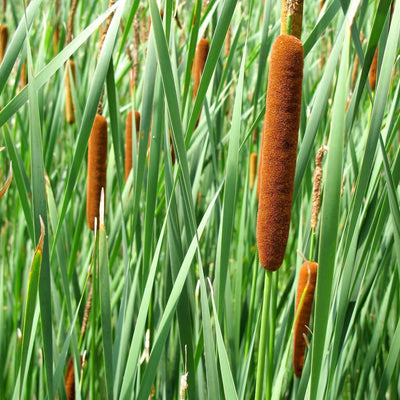How to Solve and Control Stagnant Water with the Help of Plants
It can take only a few days for little bugs and mosquitoes to start making a home in stagnant water. Pests like mosquitoes can carry very serious bugs like malaria, so stagnant water is an issue that people need to take care of. Whether the issue is in a simple garden fountain or on a large wetland, stagnant water is a problem in either scenario.
It can also have a negative effect on the outdoor aesthetics. Luckily, there are some plant species that can help in the total elimination of stagnant water. They are very useful for those who want to help the balance in large water gardens, ponds, and wetlands.
In the next few sections of the paper, we will discuss how certain types of plant life can help with stagnant water and positively improve the surrounding area and the water itself. It is very important to discuss how we can improve areas that have stagnant wetlands. These spaces need to become friendly to the environment so they can become very pleasing to the eyes.
How Do Plants Absorb Stagnant Water?
It is evident that when there are plants present, stagnant water loss is brought about by:
- Assimilating the Water: These are certain types of shrubs and tree species whose roots have the capability to penetrate deep into the earth and are able to take up and bring to the surface large quantities of moisture.
- Enhancing Water Quality: There are some plants which remove some contaminants from the water which improves the quality of the water over time while promoting a cleaner and healthier environment.
- Providing a Habitat for Wildlife: Some wetland plants provide habitat for a wide range of life which includes insects and amphibians which helps form a productive ecosystem.
- Minimizing Mosquito Breeding Areas: These plants tackle stagnant water which leads to a decrease of the chances of mosquitoes using your garden or wetland as a breeding area.
Cattails (Typha spp.)
Cattails are among the best of these plants for managing stagnant water. These water plants grow fast and attain a maximum height of between 3 and 10 feet. They do best in water that is shallow and wet in marshes, flooded pond edges, or floodplains. They are easy to recognize due to their tall, blade-like leaves and their striking flowering spikes.
Cattails also have a robust root system which makes the plant absorb excess water very effectively, thus, reducing stagnant water. Cattails are also great for improving water quality and improving biodiversity by providing a shelter for birds, insects and amphibians.
Duck Potato (Sagittaria latifolia)
Commonly known as broadleaf arrowhead or Indian potato, this perennial plant grows in shallow wetlands. Duck potato boasts large, arrowhead-shaped leaves and tubers commonly used in South American cooking.
They also decorate stagnant water. Duck potatoes are also helpful in wetlands as they stabilize soil and absorb extra water to prevent floods. Duck potatoes also enhance wildlife populations as they are food for waterfowl and ducks. This is why duck potatoes are frequently planted in wetlands.
Pickerelweed (Pontederia cordata)
This beautiful aquatic plant grows in shallow water in ponds, marshes, and wetlands. Pickerelweed’s leaves are heart-shaped and have bright blue flowers blooming from May to October. They grow from 2 to 3 feet high and are excellent for reducing water stagnation.Along with soaking up water, pickerelweed aids local wildlife such as small fish and insects by providing them with cover and food. It is beneficial in improving water quality by absorbing and adding stagnant water. This makes it easy for someone who wants to work on stagnant water to also elevate the beauty of their water garden or wetland area.
Arrow Arum (Peltandra virginica)
This is yet another aquatic plant that helps with stagnant water. Arrow Arum is known for its large triangular leaves and distinctive profile, making it a great addition to the edges of ponds and marshes. It is very prominent in shallow water and assists with water cleansing, helping remove excess nutrients and improving water quality.
In the fall Arrow Arum is distinct as its flowering spike, with its delicate slender leaves, turns into a seed pod. It acts as an additional point of focus to your wetland garden. With her ability to filter water, Arrow Arum is a perfect addition, bringing beauty and improving the wetland area.
Soft Rush (Juncus effusus)
Soft rushes grow in marshes, wetlands, or the edges of ponds. They grow in colonies, often rising up to three feet tall, and are most effective at boosting the stability of the soil and decreasing the water stagnation. They possess dense root systems, allowing them to absorb unnecessary water and stagnant pools, while also providing provisions for small wildlife and shelter for insects.
Marsh Mallow (Hibiscus moscheutos)
Marsh Mallow Marshes also consider the plant Marsh Mallow for its deep pink blossoms. A plant with large hibiscus-shaped flowers can attain a height of two to three feet. Well-drained and moist soil is optimal for marshmallow crops, as they also help manage waters standing by soaking up excess moisture. Beyond the water-managing abilities, marsh mallow also enhances two aspects of the environment, foremost is the deep pink flowers, and the second, is the glossy green leaves. Contrary to most plants, it blooms from July to August, enhancing wetland and garden aesthetics.
Conclusion
Water that is not moving can cause issues besides looking bad. This stagnant water can cause issues with pests and diseases. The good news is that the right plants can be used within your wetland areas to control stagnant water while improving water quality and helping biodiversity.
Great plants for managing stagnant water include ducks potato, marsh mallow, pickerelweed, arrow arum, soft rush, and cattails. Enhancing our environment and improving local wildlife activity can be achieved by creating a wetland that is beautiful, as well as functional, with the addition of these plants.
Ready to Transform Your Wetland? Visit TN Nursery!
TN Nursery has an online shop where they sell a range of aquatic plants to help you with balance restoration activities, should you wish to put these water plants in your garden or wetland. Do visit our online store today. in case you want to browse our extensive range of wetland plants and water garden plants.
FAQs about Stagnant Water
How can we solve the problem of stagnant water?
Stagnant water control is a technique to reduce or remove stagnant water and new water accumulation while planting appropriate water-absorbing plants like cattails, pickerelweed, and soft rush. Stagnant water control is achieved through drainage windows, some natural filtration, and filtration methods. If you plant these plants in your garden or wetland space, they will manage water levels and mosquito breeding while enhancing biodiversity.
How do you get rid of stagnant water?
Removing stagnant water requires enhancing water circulation using a drainage system, a pump, or both, in addition to planting wetland plants such as pickleweed or cattails, which help absorb water and excess moisture to help mitigate water accumulation. Maintenance activities like litter removal, help to eliminate stagnant water and even more so to stop these ponds from breeding mosquitoes.
What should be sprayed on stagnant water?
Natural biological controls like Bacillus thuringiensis israelensis (BTI) which uses biological means to destroy mosquito larva are okay in small quantities. Plus, the addition of water hyacinth and aqua pickerelweed which, as a result of their high moisture content, will absorb nutrients and alleviate nonflowing water conditions. Chemical agents should be avoided as such agents will be harmful to the system.
What can soak up standing water?
Rushes, cattails, duck potatoes, and many more have very extended root systems and can therefore absorb standing water quickly and deeply. These plants clean the water as the moisture content within the soil and the unsterilized water is transformed into stagnant pools. Their planting in the waterlogged areas help in the stabilization of the system and also the flora and fauna therein.
What can you put in water to keep algae from growing?
Nutrient rich water can support algae growth, so adding pickerelweed can help prevent algae growth in stagnant water. Also, adding surface covering floating plants can help decrease sunlight to algae, further slowing growth. Also, biological agents like BTI can help reduce mosquito larvae and then indirectly decrease algae growth.
Why can't you touch stagnant water?
Viruses, bacteria, mosquito larvae and many more organisms are present in stagnant water. Some diseases from stagnant water are malaria, dengue, and the West Nile Virus. Touch h stagnant water holds many risks. Removing stagnant water or covering it solves the associated risks from those viruses and bacteria.


